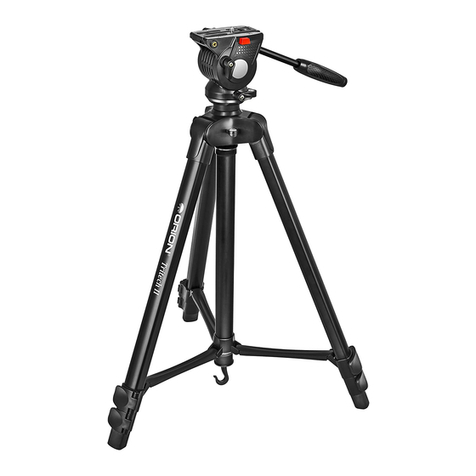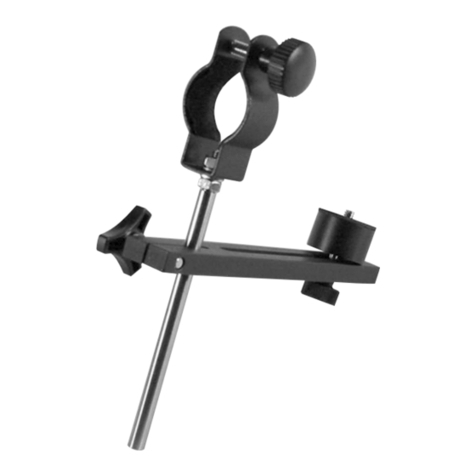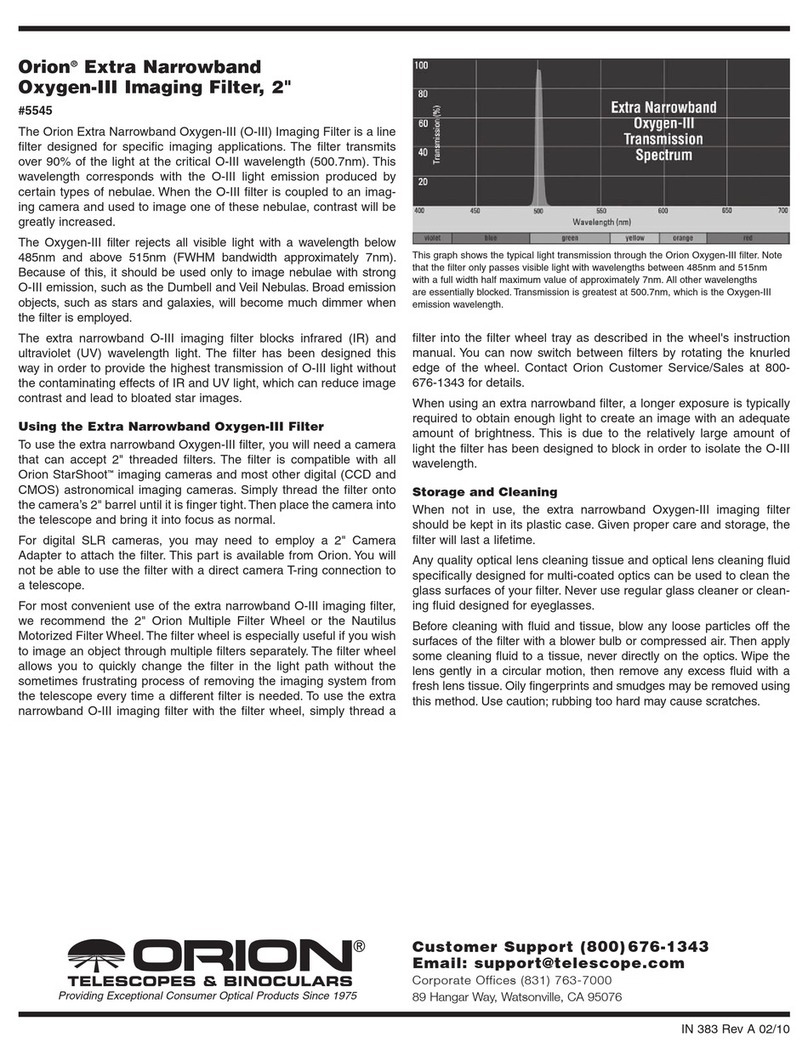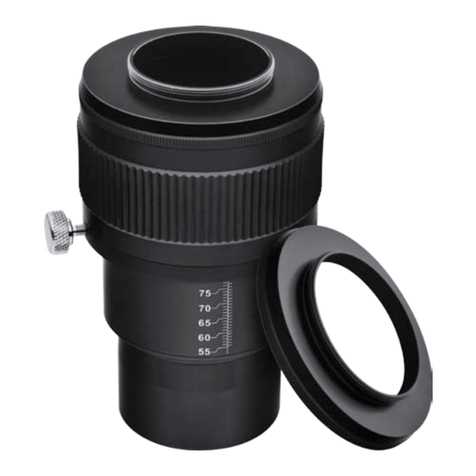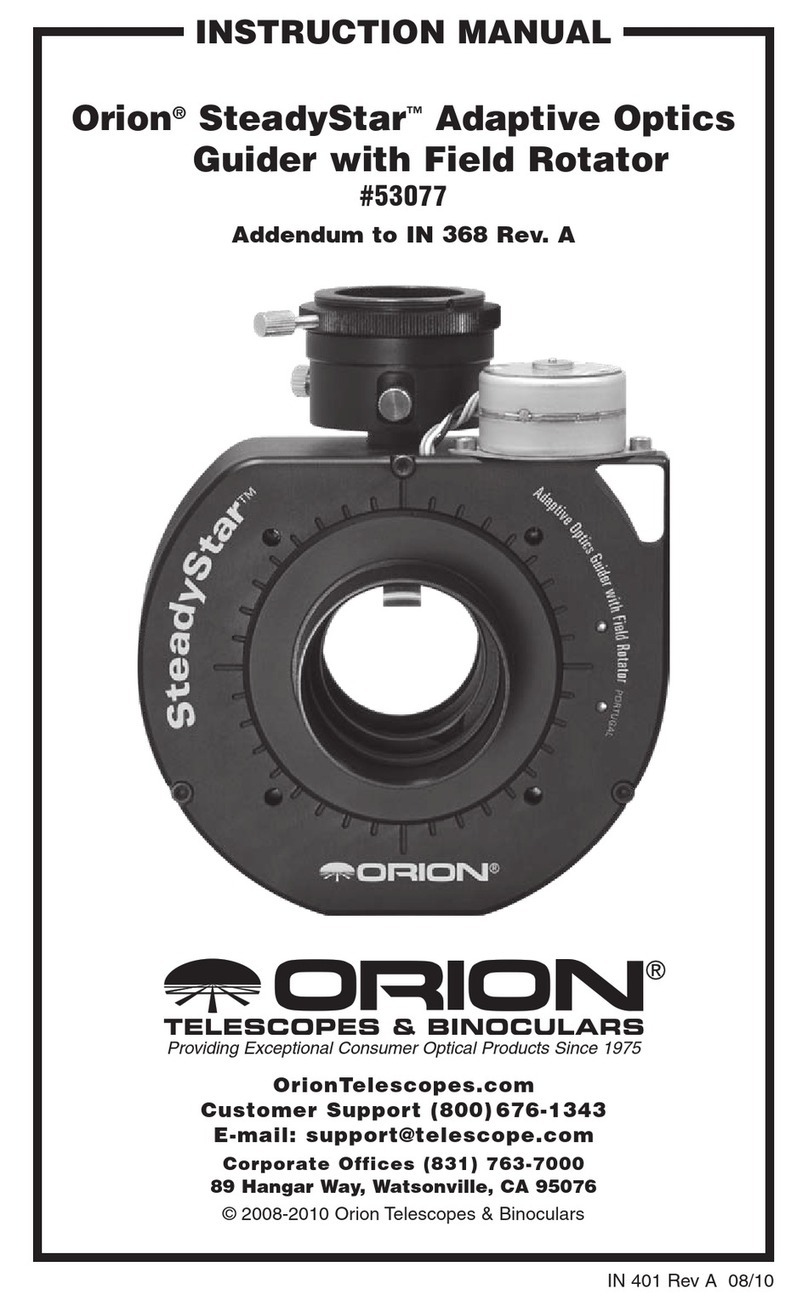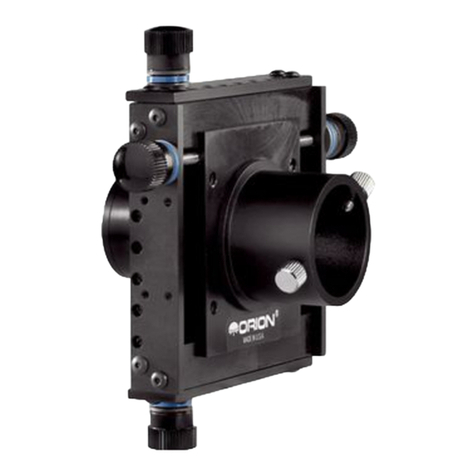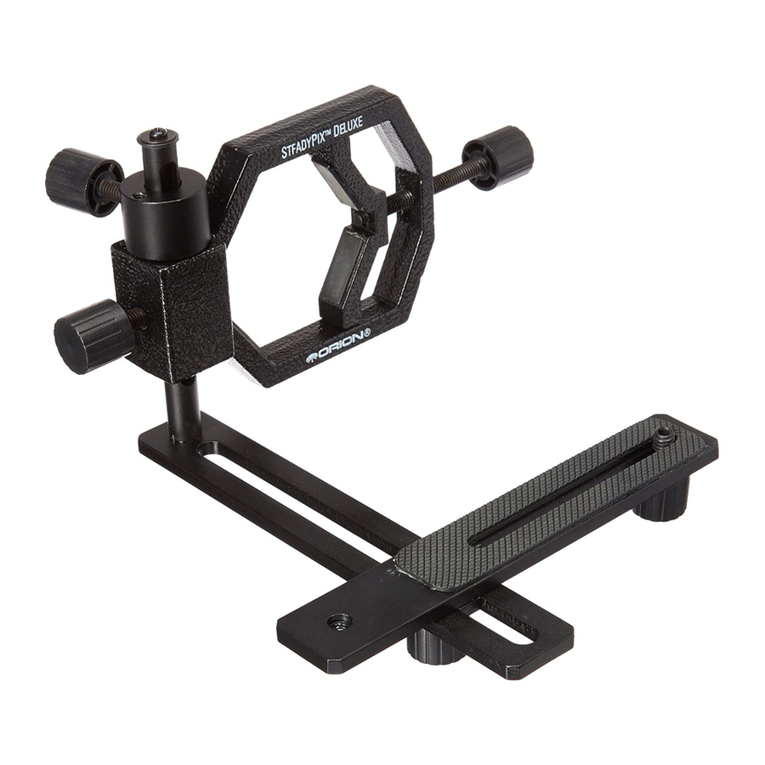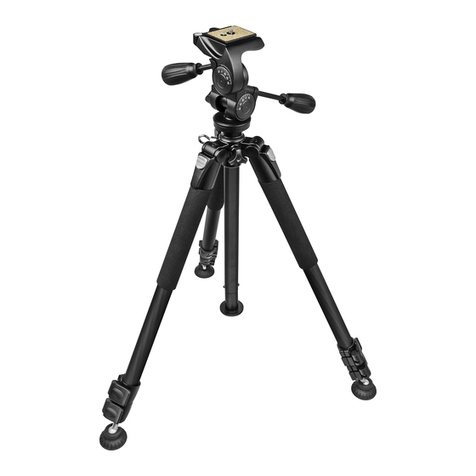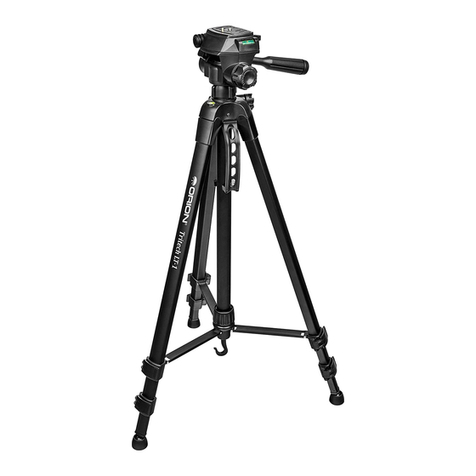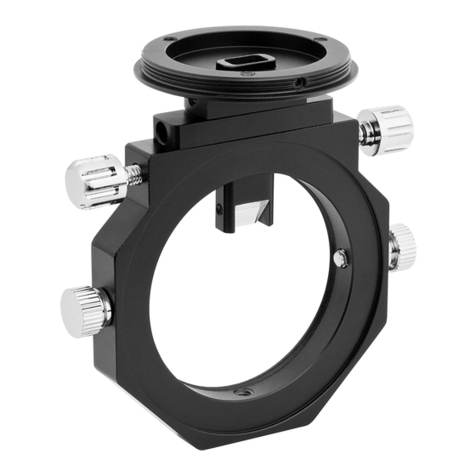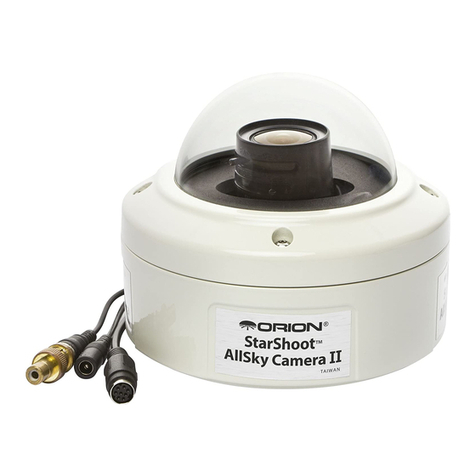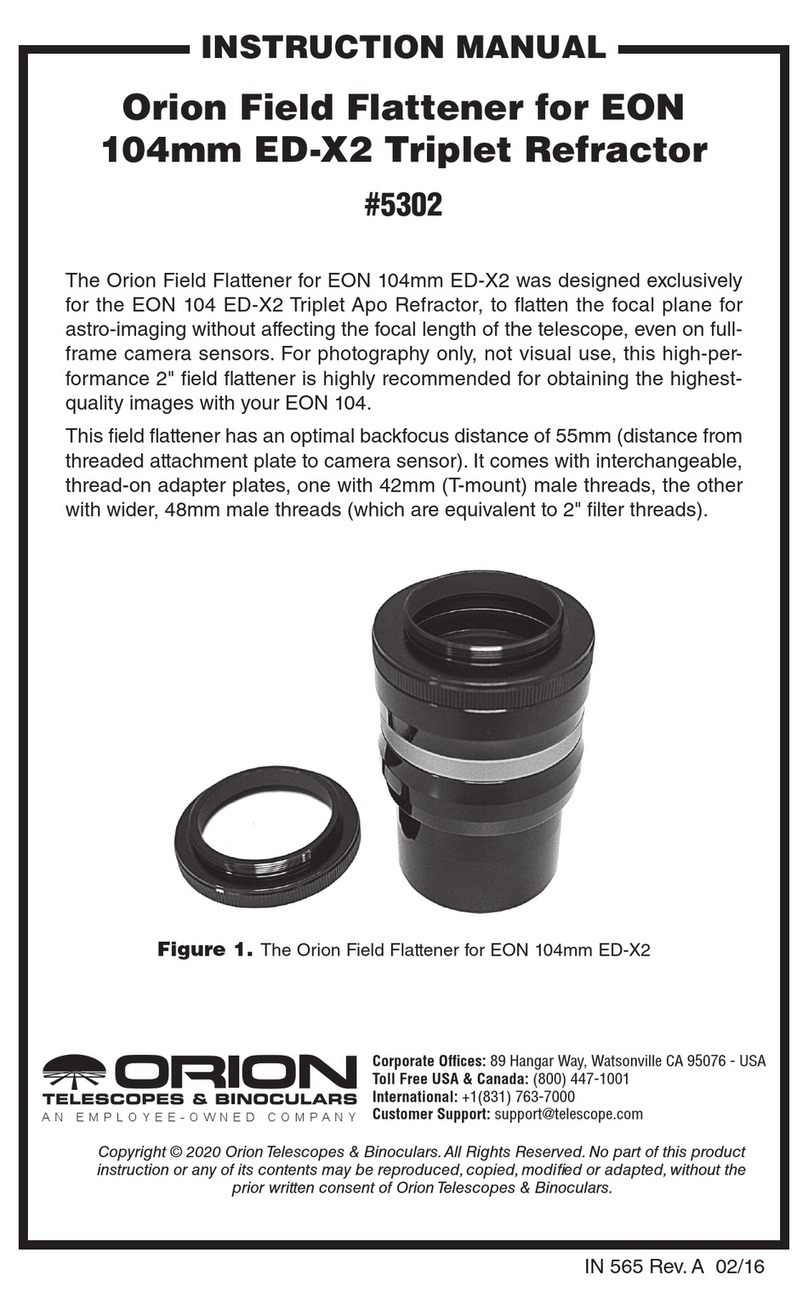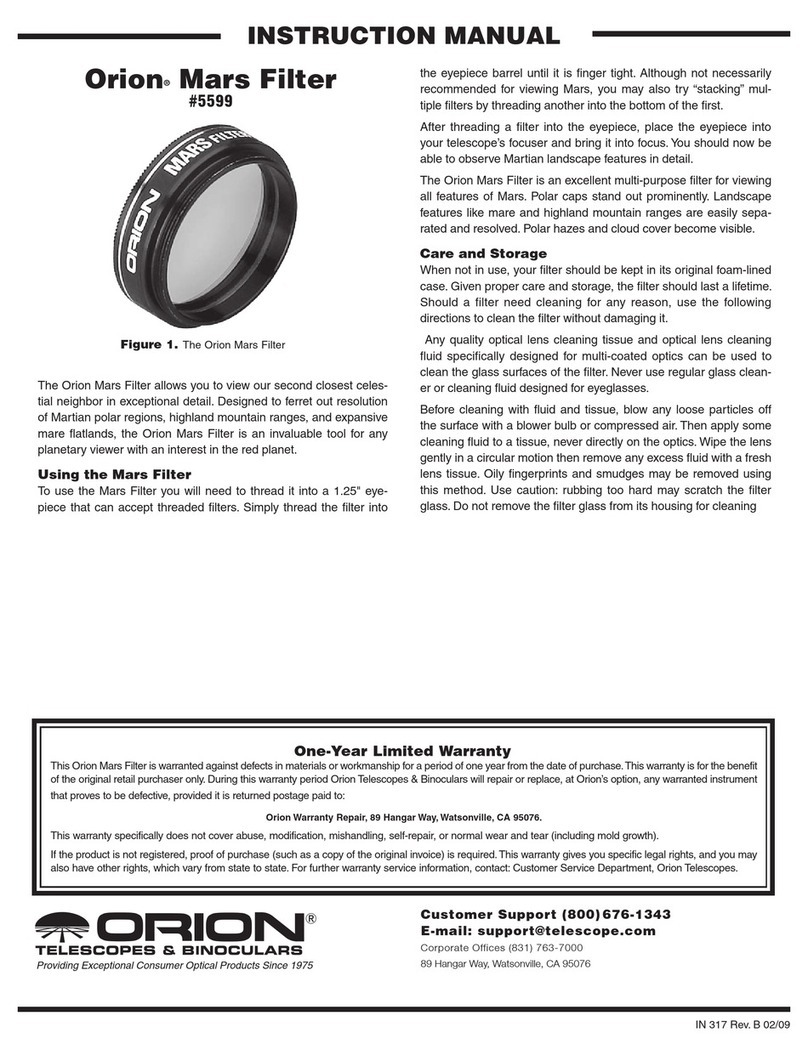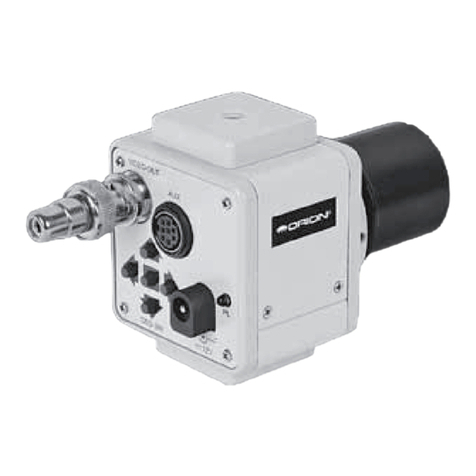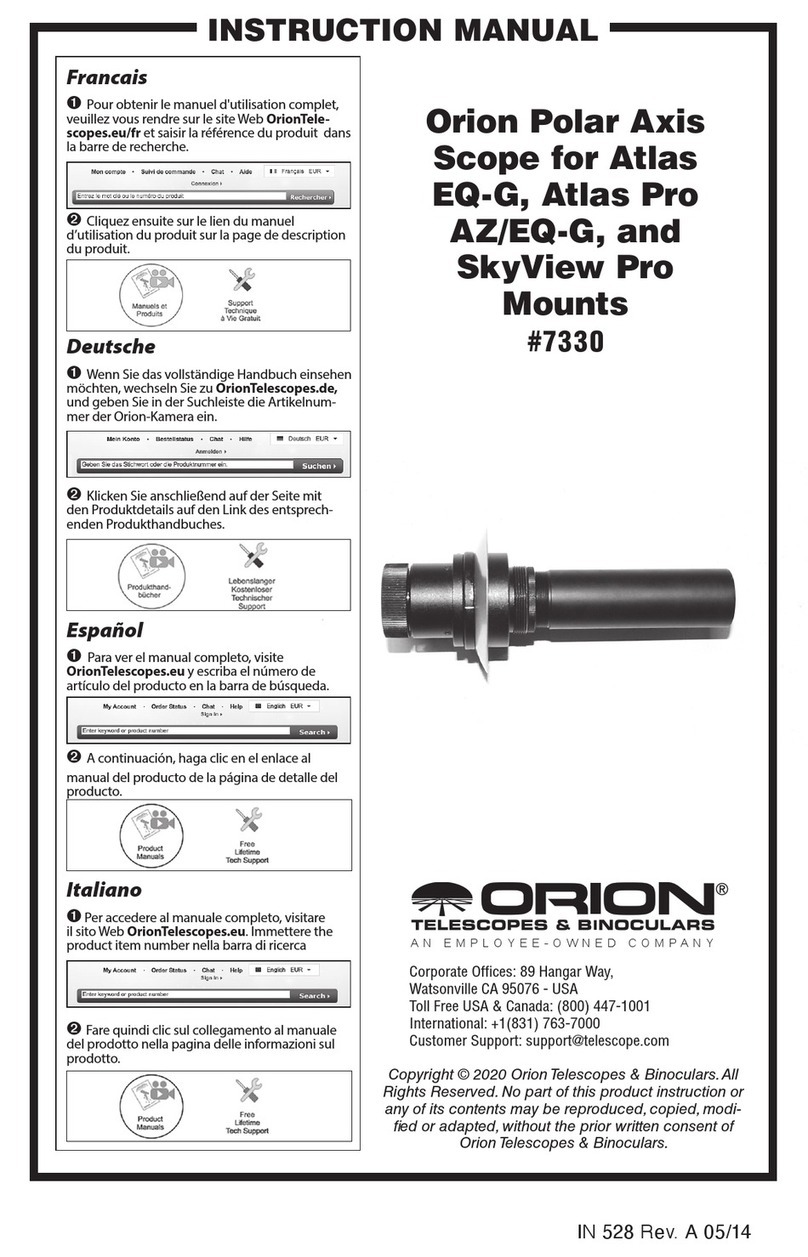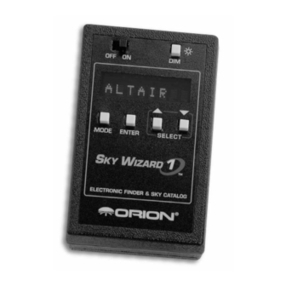
4
number of teeth on the gear connected to the encoder. For example, if
using a 4000 step encoder with an 84 tooth gear attached to it, and the
telescope axis has a 96 tooth gear attached, the final ratio would be:
4000 x 96/84=4571. If there are no gears or pulleys then the direct ratio
is 04000 (for 4000 step encoders) or 02160 (for 2160 step encoders).
Encoder Direction Test
The purpose of the encoder direction test is to make sure the encod-
ers are set to the correct polarity, correct ratios, and that nothing is
slipping. It is very important to do this test at home before trying the
Sky Wizard at night. It is the last step in the installation procedure
before going out into the field. If you find that your Sky Wizard is way
off, you must do this test before calling for assistance.
Equatorial Telescopes: Point the telescope up and slightly toward the
South so the Dec. is at 0° on the original (mechanical) setting circles.
Rotate the original RA (mechanical) setting circles so RA=00. Turn Sky
Wizard off, then back on to clear it and press ENTER after Sky Wizard
reads DEC=0. Press MODE and scroll to ENC TEST mode. Press
ENTER and it should read ER=000, ED=+000.
Move the declination axis to 90° north. The display should now show
“ER=000 ED=+090”iftheDECaxis“sign”iscorrect.Ifnot,re-enter
the INSTALL mode and change the sign to negative for the DEC axis
(AL). If the numerical value is not ED=090, then the encoder ratio is
incorrect. Check your Installation Instructions to see if you have input-
ted the correct encoder ratios in the INSTALL Mode.
To check the RA axis, again point the telescope up and slightly toward
the South so the Dec. is at 0° on the original (mechanical) setting cir-
cles. Rotate the original RA (mechanical) setting circles so RA=00.
Turn Sky Wizard off, then back on to clear it and press ENTER after
the Sky Wizard reads DEC=0. Press MODE and scroll to ENC TEST
mode. Press ENTER and it should read ER=000, ED=+000. Move the
telescope toward the Western Horizon so the RA=18 Hrs. and it
should read ER=090 ED=+000. If it reads another value, such as
ER=270 then go back to the INSTALL and change the +/- sign and
repeat the test. If you get any other values, check the encoder ratios
in INSTALL mode. Also check that the encoder and hardware are
properly installed. Make sure all setscrews are tight.
Altazimuth Telescopes: Turn on Sky Wizard and position the tele-
scope vertically as requested by the instrument in AV (telescope type)
or horizontal in AZ. Press ENTER, then the Mode button. Scroll to the
ENC TEST mode to display encoder angle. In AV mode, tilt the altitude
axis down approximately 45° from vertical. Move it up 45° in AZ. Check
thatthe display shows“AZ=000AL=+045”.If thedisplayisin agree-
ment with the telescope position, then the altitude encoder polarity is
correct and no change to the gear ratio is required. If not, press the
MODE button, scroll to INSTALL, press ENTER. Repeat the Install
procedure until you get to the encoder ratio AL=+045.Then change the
+ sign to a - sign. Be sure to go all the way through the install mode
until the word INSTALL reappears to update the changes.
Press the MODE button and scroll to ENC TEST and press ENTER.
Move the telescope about the azimuth bearing from North towards
East. The azimuth should increase from 0° to 90° if you rotate the
telescope 90°. The display should now read “AZ=090 AL=-045”,
where the 45° is from the test of the altitude axis. If the values are off,
check the encoder ratios in the INSTALL mode. Make sure the encod-
ers and hardware are installed correctly. If the AZ is off, make sure the
bottomboltisNOTrotating.Adropof“superglue”ontheverybottom
bolt and washer will help (applied from the bottom, NOT top). If the
ALT is off, make sure the altitude bearing is rigid.
Startup Index Mark
Once you have finished running INSTALL to tell Sky Wizard about
your telescope, there is one final step which need only be done one
time. As mentioned in the SETUP command, you will see that your
telescope mount needs to be aimed to a particular position once each
time you set up to observe. The accuracy of Sky Wizard is dependent
upon your accurately setting the initial index mark, so take your time.
Equatorial Mounts: If your telescope has an Equatorial mount with
mechanical setting-circle dials, these will do nicely. First, verify the
declination setting circle is accurately set by aiming your telescope to
90° declination (telescope aimed up the polar axis). Rotate the tele-
scope in Right Ascension and look for any tube “wobble”.You can
verify this by looking through an aligned finder to see that stars rotate
around the middle of the field of view. If necessary, adjust the tube so
there is no wobble and reset the setting circle to 90°.
Another method for Fork Mounted Equatorial telescopes is to check
the Dec. Setting Circle using a bubble level. This should be done
inside using a carpenter’s level, before going out into the field. Take
the telescope off the wedge and put it on a level surface. Make sure
the drive base is level and the telescope is pointed straight up with
the corrector end away from the drive base and the Dec.=90. Place
the level across the front of the corrector cell, perpendicular to the
fork arms. Adjust the Dec. slow motion until it is level. Adjust the Dec.
setting circle to read exactly 90.
German-type Equatorial Mounts: These mounts have two possible
positions for the 0° declination setting required during initialization. It
is important to use the correct one, or the encoder sensing will be
backwards. The telescope should be aimed generally EASTWARD
when the declination is set to 0°. Determine which of the two zero
degree index marks corresponds to this direction and place an indi-
cating mark there for future use. You can confirm that the setting
circles are accurate by pointing the telescope exactly North. Rotate
the telescope in RA only. Stars should rotate about the center of the
field of view. When this is achieved by adjusting the Dec. slow motion,
move the Dec. setting circle to exactly 90.
For Altazimuth or Dobsonian Telescopes: Put a simple index align-
ment mark on your scope to save time in the future. You can choose to
make the index mark with the telescope aiming either vertically or horizon-
tally, depending on your choice in the INSTALL mode. A precisely vertical
orientation can be determined by rotating the telescope around the base
and looking for any tube “wobble”. Better yet, use a carpenter’s level.
Adjusttheangleuntilno“wobble”canbeseenwhilerotatingthetelescope.
Youcanalsoinstalla“stop”intherockerboxsothatthetelescopestops
at exactly the Vertical position. Alternately, a horizontal orientation can be
made by placing the telescope base on a very level surface, and then
leveling the telescope tube with a carpenter’s level. Mark a line on the
telescope bearing and on the body to use for an index mark.
2. Operation
Overview
Sky Wizard has nine operating modes. Each mode or function runs a
computer program to perform a different task. Pressing the MODE
button shows the current mode. Change to a different mode by press-
